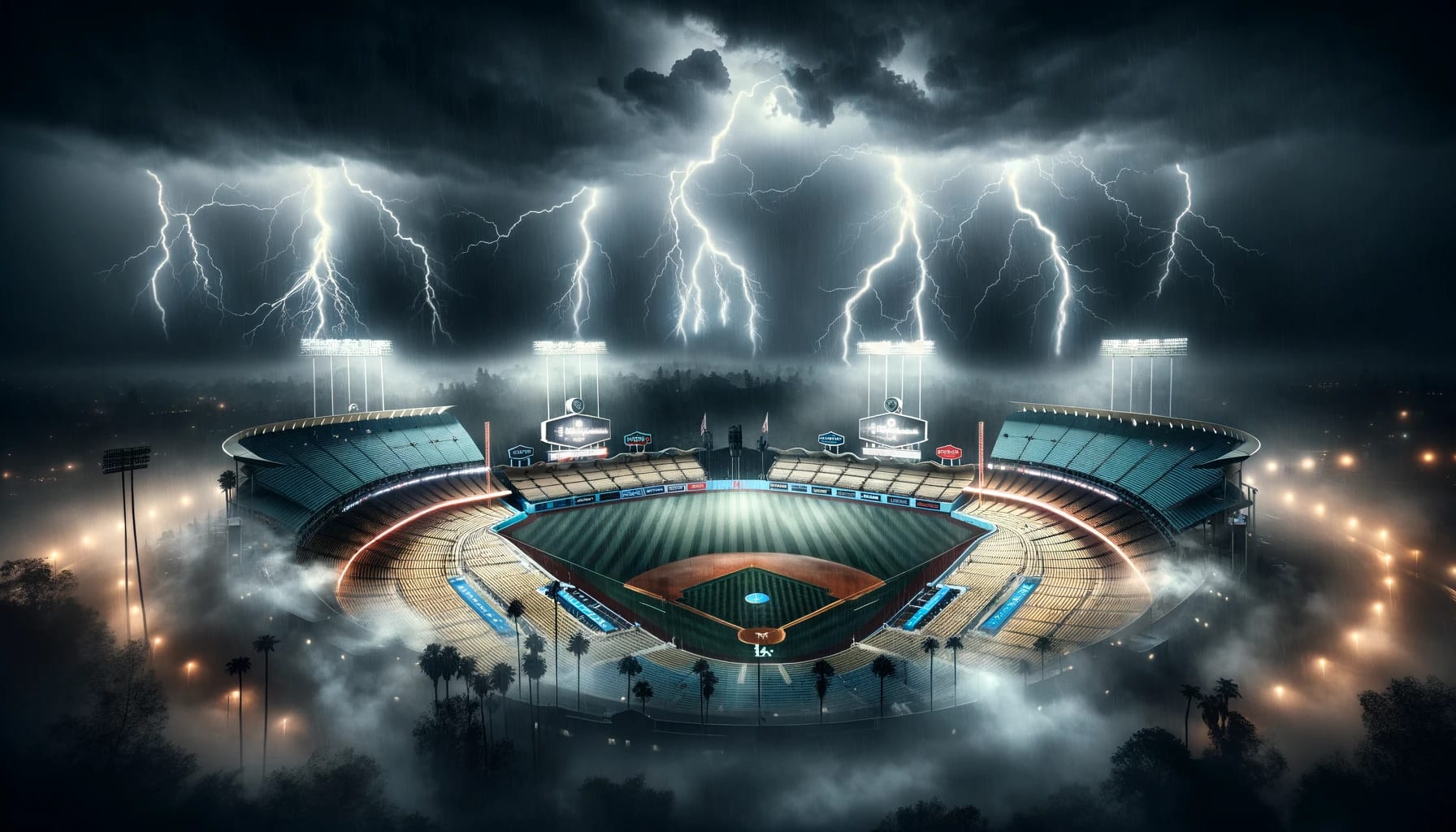The Dodgers left Brooklyn at the end of the 1957 season, just two years after winning the World Series, their first as a franchise. Dodger Stadium opened on April 10, 1962, and for the past 60 years, this ballpark has been host to much more than baseball. Regardless of how much the defense shifts, there are gaps in the field for spirits to move with ease.
The next time a double play is interrupted or a pop-up goes uncaught, go ahead and blame the ghouls hiding in plain sight, careful to not leave imprints in the dampened dirt and fresh-cut grass.
Did You Know?
- The Brooklyn Dodgers as a franchise are older than Brooklyn as a borough of New York City. The Dodgers were founded in 1883 as an American Association team and later joined the National League (where they remain to this day) in 1890. Brooklyn was incorporated into New York City on January 1, 1898.
- The Dodgers have a National League record of 24 World Series appearances; 7 of these appearances have resulted in a championship.
- While many teams throughout the MLB took their time to integrate, the Dodgers spearheaded the movement beyond signing Jackie Robinson. In the decade after starting Robinson, former Negro League players such as Roy Campanella, Don Newcombe, Joe Black, and Jim Gilliam played for L.A. During this decade, the Dodgers went to the World Series 6 times.
Run Home!
The Dodgers are on the road. The field crew has gone home, and the lights are out. All that remains is the staccato movement of cars out on the freeway.
This is when the dead come out to play.
You might hear the crack of the bat when the ballpark is pitch black.
Batting practice? Maybe.
Or it's the ghost, the soul of everyone who died during and after the stadium was built, which, in the process, displaced an entire community. Still there, underneath the outfield, is the remnant of what once was.
The roaring crowd never hears the rumbling of the dead during the game. The noise is just way too loud. The dead are drowned out.
Through eminent domain, Los Angeles evicted the residents of Chavez Ravine in order to build Dodger Stadium. Chavez Ravine was originally planned as the site of public housing units before the project fell through. For a decade, the city fought with primarily Mexican-American residents to repossess property on Chavez Ravine. After a decade of fighting the inevitable, not a single resident lived on what would become the 352 acres used for Dodger Stadium.
That an entire community was strongarmed off their land and out of their homes brings about exactly the kind of bad vibes that Los Angelinos are notoriously known for avoiding.
Baseball is without a doubt the most superstitious of major league sports. It's a game of curses and traditions, jinxes, and rally caps. Sure, the Dodgers have gone to the World Series 24 times to date, but winning 7 out of 24 isn't the best of odds. Especially when considering that the last two wins were 32 years apart. Could this be punishment for past sins?
"Root, Root, Root for the Home Team (or Die)"
Dodger Stadium isn't for the weak of heart. Visiting fans have been harassed and abused in the past, some to the point of hospitalization. Some of the worst incidents have come in the past decade.
The Dodgers and San Francisco Giants have been rivals since both teams resided in New York City prior to their California relocation in the 1950s. As with all sports rivalries, the fans more often than the players take these rivalries to dangerous levels.
2011, a Giants fan was attacked in the parking lot of Dodger Stadium. The man received brain damage and was permanently disabled.
2018, Game 5 of the World Series between the Boston Red Sox and the Dodgers. Game 5 was an important one because the Red Sox won the championship, defeating the Dodgers four out of five games. A group of Dodgers fans was so enraged that they stabbed a Red Sox fan five times. One thrust of the knife for each game played in the series.
March 30, 2019, a man in his 40s and a father of four was attacked by a group of Dodgers fans on the way to his car. He also received brain damage from this incident. If the man is a fan of the Arizona Diamondbacks, the attack is all the more outrageous considering the Dodgers beat Arizona that day 18-5.
April 27, 2021, a brawl involving multiple groups of fans broke out on the steps leading into one of the stadium entrances. The cause was likely that the Cincinnati Reds rallied late in the game against the Dodgers and won.
With even more fights breaking out and visiting fans being attacked this season, Dodger Stadium has the reputation of being MLB's most dangerous ballpark. Dodgers fans seem to be doing little to rebuke this claim. With so much violence, it leads the observer to wonder what the source of all this rage could be?
Fans throughout the country, throughout sports, have their moments of rowdiness, and occasionally something escalated occurs. But the history of Dodger Stadium in regards to violence and bloodshed is as if the ballpark is haunted with something more dangerous than ghosts.
Dodger Stadium was raised from strife and violence. Things that are buried in the soil and sprout in the shape of rage, tribalism, and irrationality. Some of the worst traits of sports fandom.
For many baseball fans, the safest way to visit Dodger Stadium is by watching the game on tv. That way, if any unexplained act of violence should occur to you, you'll know it wasn't because you wore a hat without "L.A." on it in white, bold in stark contrast against the royal blue.
Then again, ghosts used to be fans, too.

The Arechiga family continues their eternal vigil over their stolen land

The lost children of Chavez Ravine still play on their former playground

The Community Patriarch continues his fight for justice

The Displaced Families Collective surveys their transformed homeland

